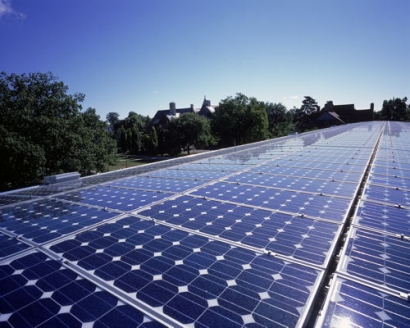
There are several advantages of Solar PV based power plants:
These plant setups are modular in nature. Let us take an example of a 700MW power plant. It is built with solar panels of 335w capacity. These panels are connected in series and parallel to each other in order to form a 3.5MW unit connected to a central inverter. Such 200 units are combined to form a 700MW unit. Failure of even ten units will result in loss of 35MWs only. The remaining 665MW generation would still take place uninterruptedly. Against this, let us take an example of a thermal power plant unit of 700MW. In this case, there is only one steam generator, one steam turbine and one generator. In case of failure of any one component like steam generator or turbine, there is disruption of an entire 700MWs as this is not modular design like Solar PV plant.
Construction is much simpler and can be set up in much lesser time than the setting up of a thermal plant.
All the components are available off the shelf as such, which initiates the assembly in a short time. As the support structure is not as sophisticated as in thermal plants, the setting up of the foundational system is much accessible.
As voltages at the inverter level are much lower, electrical hazards also decrease.
All components follow stringent International standards. Therefore, failure probability is also minute. Even at the end of the 25-year tenure, the solar panels will have the capability to generate at 80% level, which is the major component of the system.
As there are no moving parts, the wear and tear are minor. Moreover, maintenance of the system is easy as well.
The workforce requirement for plant maintenance is significantly less when compared to that required for thermal plants.
The cost of maintenance is relatively less.
Disadvantages of Solar Power plants:
Solar energy is available from sunrise to sunset. As such, there has to be some alternative at night hours.
There may be variations in light intensity affecting the power generation.
To overcome the above problems, storage mechanisms are being explored all over the world. As the battery costs have come down, storage is becoming viable. Since wind energy is not dependent on sun, it is also being integrated with solar power to make energy for nighttime availability by wind power.
Conventional power requirement for the Indian region (including Srilanka and Nepal), as per a study conducted by Prof. Jacobson of Stanford University in California, is about 1886GW by the year 2050. However, if we switch over to renewable energy, this requirement would come down drastically to 945GW.
This saves 941GW, which means a saving in terms of capital cost. Besides this, there is a saving in terms of annual maintenance. As per the estimates, 160GW power for residential, 40.5GW for commercial, 117GW for transportation, 559GW for industrial and 45.9GW for agriculture, and22.6GW for other purposes is envisaged.
This is possible due to the greater efficiency of renewable sources. One can hope for a cost reduction to the tune of 50% in terms of infrastructure deployment with renewable energy infrastructure.

